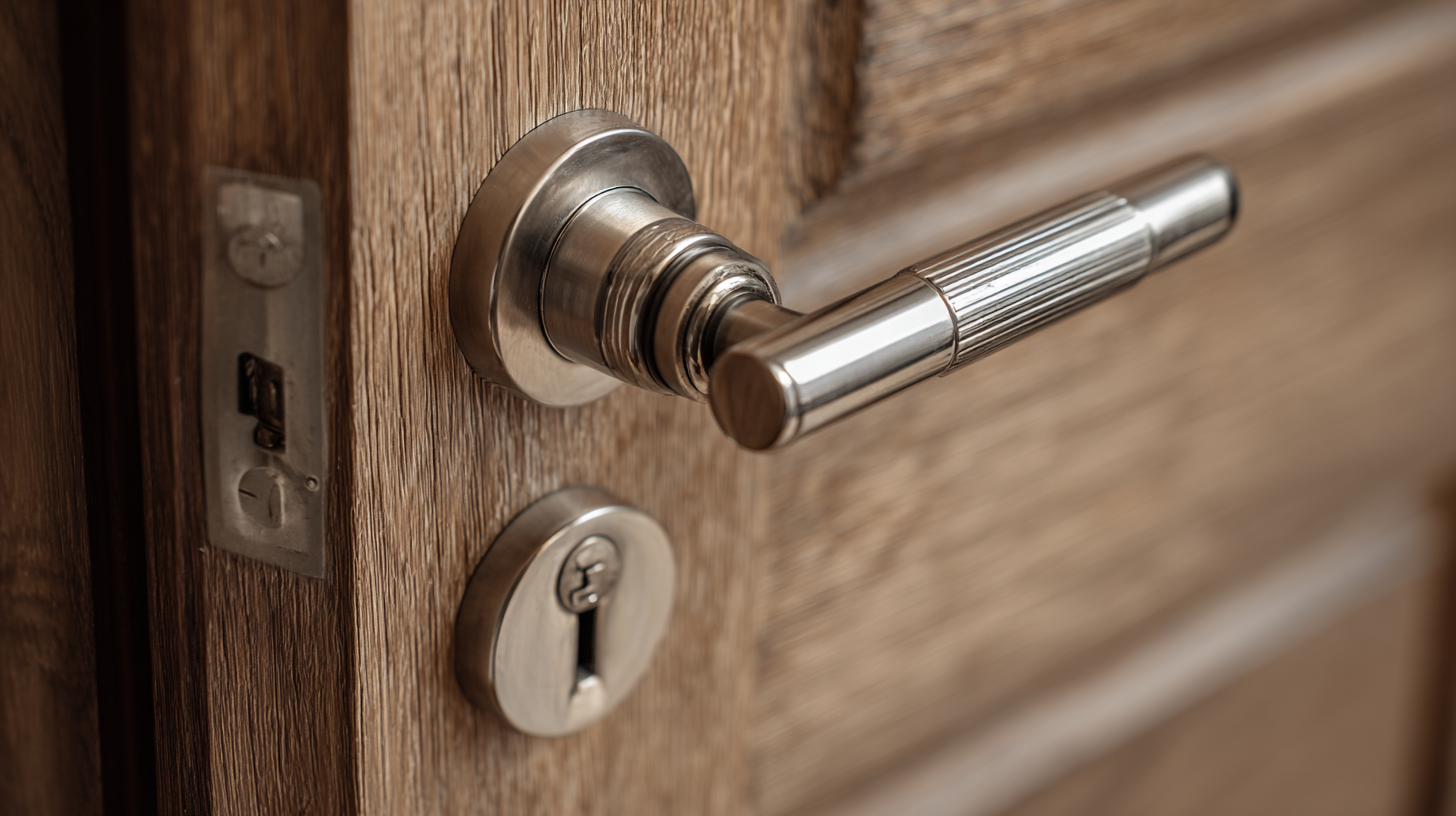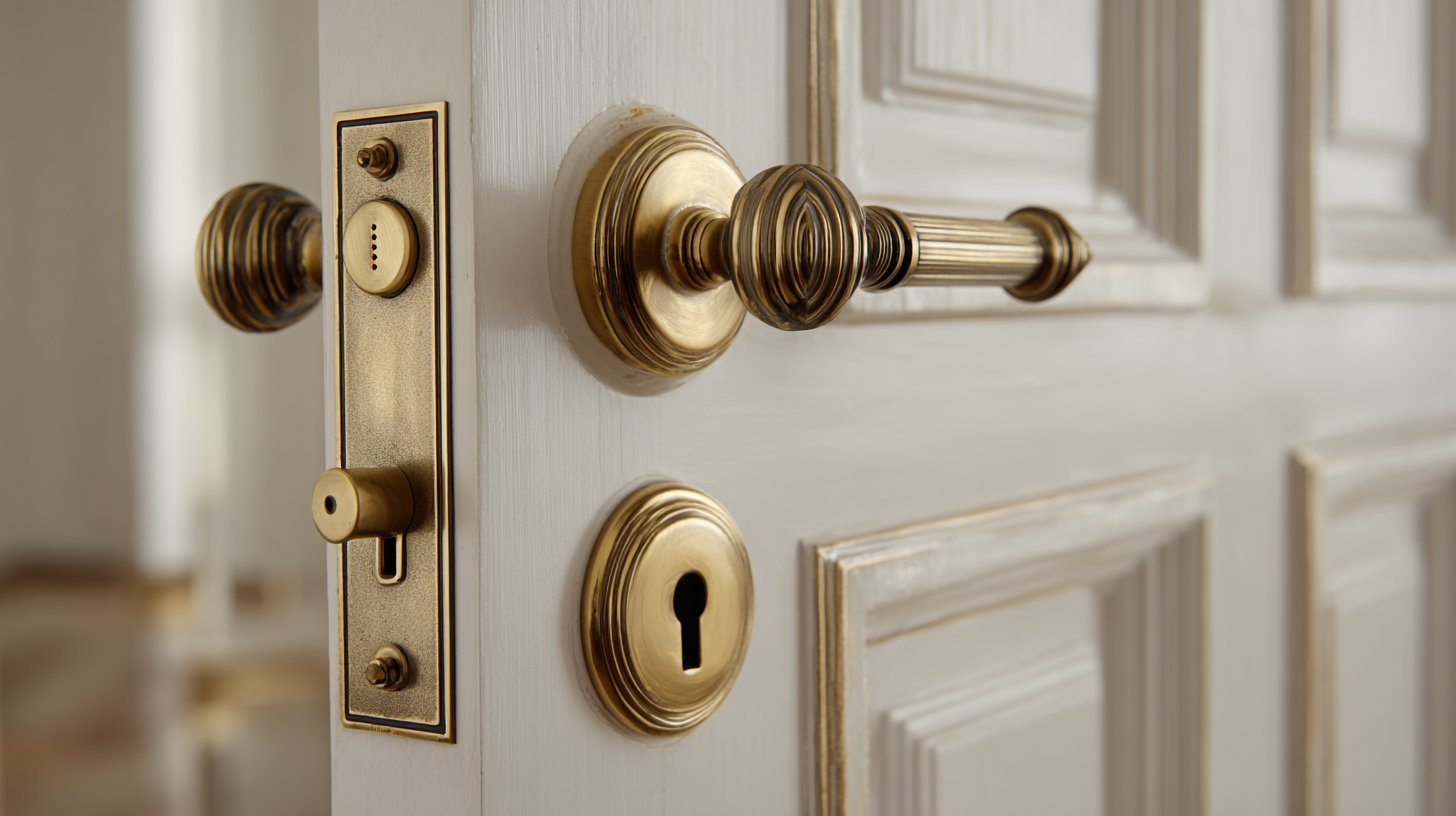 When it comes to securing your home, choosing the right interior door locks is essential for ensuring safety, privacy, and convenience. According to a report by the National Institute of Standards and Technology, approximately 30% of residential burglaries occur through unlocked or inadequately secured interior doors. With the increasing focus on home security, the demand for high-quality interior door locks has surged, prompting advancements in technology and design. The global market for door locks is expected to reach over $14 billion by 2025, reflecting the critical role that effective locking mechanisms play in residential safety. This guide will assist homeowners in navigating the myriad options available, emphasizing the importance of selecting interior door locks that fit both their security needs and aesthetic preferences.
When it comes to securing your home, choosing the right interior door locks is essential for ensuring safety, privacy, and convenience. According to a report by the National Institute of Standards and Technology, approximately 30% of residential burglaries occur through unlocked or inadequately secured interior doors. With the increasing focus on home security, the demand for high-quality interior door locks has surged, prompting advancements in technology and design. The global market for door locks is expected to reach over $14 billion by 2025, reflecting the critical role that effective locking mechanisms play in residential safety. This guide will assist homeowners in navigating the myriad options available, emphasizing the importance of selecting interior door locks that fit both their security needs and aesthetic preferences.
When it comes to securing your home, understanding the different types of interior door locks is crucial. Interior door locks come in various styles, each designed to meet specific needs. The most common types include knob locks, lever handle locks, and privacy locks. Knob locks are easy to install and are often used for bedrooms or bathrooms where privacy is desired. Lever handle locks, on the other hand, provide ease of access, especially for individuals with disabilities, making them a popular choice for residential spaces.
Another important category of interior door locks is the deadbolt, which offers additional security. Although commonly found on exterior doors, single-cylinder deadbolts can also be used on interior doors for added protection. Additionally, smart locks are gaining popularity, providing the convenience of keyless entry and remote access through smartphone technology. By understanding these various types of interior door locks, homeowners can make informed decisions that enhance both security and convenience within their living spaces.
| Lock Type | Description | Use Cases | Security Level |
|---|---|---|---|
| Standard Knob Lock | Basic locking mechanism, easy to install. | bedrooms, bathrooms. | Low |
| Deadbolt Lock | More secure than standard locks, requires a key. | Exterior doors, high security areas. | High |
| Smart Lock | Electronic lock controlled via smartphone or keypad. | Main entrance, tech-savvy homes. | Medium to High |
| Lever Handle Lock | Convenient for users with mobility issues. | Commercial buildings, accessible areas. | Medium |
| Biometric Lock | Uses fingerprint recognition for access. | Home offices, personal safes. | Very High |
When selecting interior door locks for your home, security should be a top priority. One key feature to consider is the locking mechanism.
Deadbolts are often recommended for their enhanced security by providing additional strength compared to standard spring bolt locks.
Additionally, look for locks that have anti-drill and anti-pick features to prevent unauthorized entry. It is essential to choose a lock that meets your security needs while also being user-friendly for family members.

When selecting interior door locks for your home, understanding the industry standards for
durability and reliability is paramount.
According to the American National Standards Institute (ANSI), locks are rated on a scale from
Grade 1 to Grade 3,
with Grade 1 being the highest.
Grade 1 locks are designed for commercial use, constructed to withstand over 800,000 cycles of operation,
making them a sound choice for homes requiring heavy-duty security.
In contrast, Grade 3 locks are suitable for low-traffic areas and have a lifespan of approximately
200,000 cycles, which may not be ideal for busy households.
Moreover, the durability of interior door locks extends beyond just usage cycles. The National Fire Protection Association (NFPA)
reports that the material composition of locks plays a crucial role in their
performance. For instance, solid brass or stainless steel locks offer better resistance to corrosion and wear,
thereby enhancing their longevity. Furthermore, locks with anti-pick
and anti-bump features significantly improve security, as they are
designed to withstand common break-in techniques. Investing in high-quality locks that meet these industry
standards ensures both reliability and peace of mind for homeowners, safeguarding their living spaces effectively.
 When selecting the perfect interior door locks for your home, it's crucial to evaluate different brands to find the best value for your needs. Each brand offers unique features, price points, and levels of security, making a comparative analysis essential. For instance, brands like Schlage and Kwikset are well-known for their durability and ease of installation, while August provides advanced smart lock features that appeal to tech-savvy homeowners. Consider the trade-offs between traditional locks and smart locks based on your lifestyle preferences and security requirements.
When selecting the perfect interior door locks for your home, it's crucial to evaluate different brands to find the best value for your needs. Each brand offers unique features, price points, and levels of security, making a comparative analysis essential. For instance, brands like Schlage and Kwikset are well-known for their durability and ease of installation, while August provides advanced smart lock features that appeal to tech-savvy homeowners. Consider the trade-offs between traditional locks and smart locks based on your lifestyle preferences and security requirements.
Tips: When choosing a lock, prioritize both functionality and design to ensure it complements your interior decor. Additionally, assess the warranty and customer service reputation of the brand, as this can significantly influence long-term satisfaction. Remember that the cheapest option isn't always the best; investing a bit more in a reputable brand can save you money on repairs and replacements down the line. To enhance security further, consider locks with additional features such as anti-pick pins or deadbolts that provide extra protection against forced entry.
When it comes to installing door locks, ensuring optimal performance requires more than just selecting the right product. According to a report by the Security Industry Association, approximately 70% of break-ins occur through entry points that were not adequately secured. To prevent this, proper installation becomes vital. Start by assessing the door material; solid wood and metal doors generally provide higher security compared to hollow-core doors. Ensure that your locks are compatible with your door type and thickness, as this can significantly affect their effectiveness.
Additionally, follow precise installation procedures to enhance the longevity and functionality of your locks. Research from the Electronic Security Association indicates that improper installation can lead to mechanical failures in 20% of locks within the first year. Make sure to use the right tools and follow manufacturer guidelines diligently. When mortising for a deadbolt or lever lock, accuracy is key—use a chisel for clean edges to ensure the lock fits snugly. Regular maintenance, such as lubricating the locks and checking screws for tightness, can prevent future issues and extend the lifespan of your door locks.
This chart illustrates the importance rating of various factors to consider when choosing the perfect interior door locks for your home. Each factor is rated on a scale of 1 to 10, helping homeowners prioritize according to their specific needs.